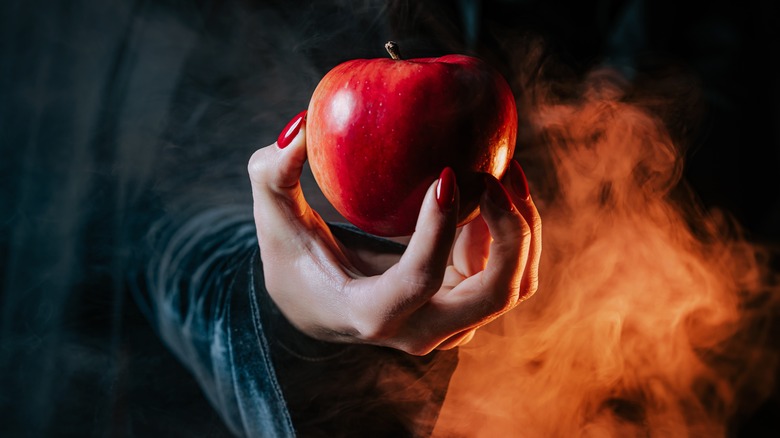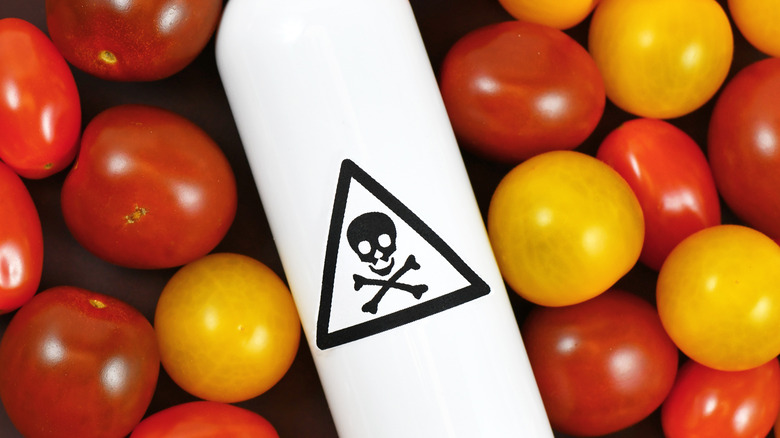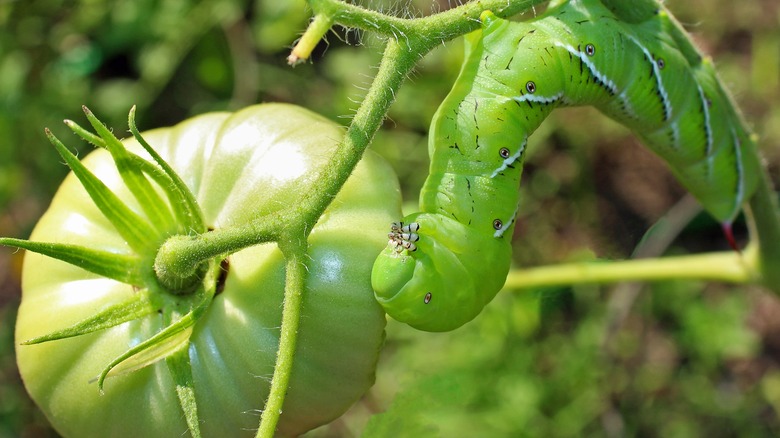Why Tomatoes Were Once Called 'Poison Apples'
One would argue that tomatoes are one of the most beloved foods on the planet. There is an almost inexhaustible list of delicious dishes you can make from fresh tomatoes. And with the right brand of canned tomatoes, you're only a few simple steps away from crafting the perfect tomato sauce. Whether they're featured in salsa, spaghetti sauce, in a salad, or on a slice of pizza, tomatoes always deliver a powerful punch of zesty flavor.
But did you know that the juicy tomato was once castigated to the same culinary realm as the forbidden fruit featured in the tale of "Snow White?" For a long time, tomatoes were feared, not revered. Though tomato sauce is often thought of as being an inextricable part of modern European cuisine, the fruit wasn't cultivated in the region until the late 1500s, per Smithsonian Magazine. Furthermore, it was another several hundred years before the public's perception surrounding the tomato shifted toward the positive.
People used to be terrified of tomatoes
According to Smithsonian Magazine, it was a misguided fear about the toxicity of tomatoes that earned them the moniker "poison apples" in 1700s Europe. At the time, aristocrats were falling ill, and even dying, after eating meals. Tomatoes became the prime suspect in this rash of illnesses. However, aristocrats should have been looking past the tomatoes on their tables and at the plates they were being served on. Early pewter kitchenware was riddled with lead, and the acidic composition of tomatoes could cause this toxic metal to be drawn from the plates, therefore poisoning the people eating from them.
Across the pond, early Americans were also wary of eating tomatoes. Though certain urban areas of colonial America were using tomatoes in their cuisine, the Modern Farmer tells us that the British mistrust of tomatoes, which was fomented by English herbalist John Gerard writing that the fruit was, "of rank and stinking savour," persisted for centuries. However, the tomato was thrust into the mainstream during the American Civil War, when it proved to be the perfect produce for canning.
The truth of tomato toxicity
Before the tomato could prove its usefulness during the American Civil War, a persistent rumor exacerbated Americans' fear of the fruit. Smithsonian Magazine, citing J.J. Thomas' 1867 "The Illustrated Annual Register of Rural Affairs and Cultivator Almanac," explains that in the 1830s, folks lived in fear of the Green Tomato Worm, a horned wiggler that lived inside the flesh of tomatoes. Touching a Green Tomato Worm, people thought, would spell your death. This myth was so pervasive that even Ralph Waldo Emerson believed it, per Smithsonian Magazine. Though they aren't lethal, the tomato and tobacco-feeding hornworms seem to fit Green Tomato Worm's description, which helps to explain how this strange rumor got off the ground (via North Carolina State University).
Legend has it that in September of 1820, Colonel Robert Gibbon Johnson confidently strode up the steps of New Jersey's Salem County Courthouse, a bushel of tomatoes in hand, according to History101. Before the assembled crowd of horrified onlookers, Johnson took a massive bite out of a tomato, proving that they weren't toxic and thrusting the tomato into the culinary conversation.
Whether the story is true or not, the fact remains that tomatoes (per WebMD) are now considered a delicious and versatile food loaded with health benefits, and pizza lovers everywhere can certainly appreciate that.


